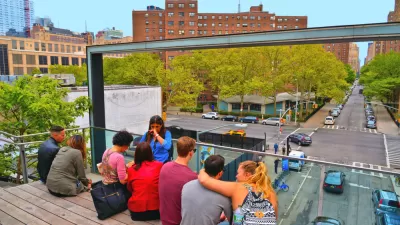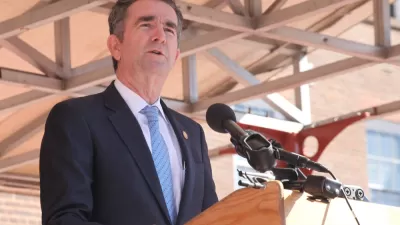With the high cost of land and housing in most major cities, why don't we just make the hundreds of "walkable" small towns in the United States more desirable places to live for average earners?

Forgive me if, after living in a small town for seven years, I have forgotten exactly what “walkable urbanism” means.
I walk every day on the sidewalks in my town of 1,500 people. Sometimes I’m just walking for recreation, and other times I want to get to the convenience store, post office, or one of several restaurants. It’s more of a bicycle trip to reach the grocery or drug store one mile away, but these destinations are also walkable.
But being a 40-minutes drive from the nearest city and an hour from the state capital, my small town surely doesn’t qualify as “urban.” Not by the definition used in the recent Urban Land Institute report, Housing in the Evolving American Suburb, which assumes walkable urbanism takes place mainly in or near the downtown of a major city.
The report further asserts that the dream of walkable urbanism can only be achieved by living in a tiny house or an apartment, given the high price of land and housing in these areas. If a young person or couple wants an affordable single-family home with a yard, they will have to settle for living in a fringe suburban setting, removed from commercial and civic amenities, and even access to sidewalks.
“... 'Walkable urbanism' has become somewhat of a luxury good that many households will not be able to afford … for many households the opportunity to walk to stores and restaurants will probably lose out to even higher priorities,” the report states.
I have observed walkable urbanism created out of nothing recently in some semi-rural areas here in Virginia such as Old Trail, a development west of Charlottesville, a metro of about 150,000 people; or in Spotsylvania Courthouse, 12 miles from the city of Fredericksburg. But these new neighborhoods are not really affordable to average working people. I suppose their developers are able to include walkability and a mix of commercial uses because there is significant demand in those locations from middle-class buyers.
But if true affordability can’t be achieved in these from-scratch places, why not build more around towns like mine? Many people who live in my town commute to Charlottesville or Richmond for work and specialty shopping, but their basic needs can still be fulfilled within a very short drive, or even by foot or pedal.
Well, there are at least two big problems with my proposal:
FULL STORY: How About Walkable “Small Town-ism?”

Planetizen Federal Action Tracker
A weekly monitor of how Trump’s orders and actions are impacting planners and planning in America.

Map: Where Senate Republicans Want to Sell Your Public Lands
For public land advocates, the Senate Republicans’ proposal to sell millions of acres of public land in the West is “the biggest fight of their careers.”

Restaurant Patios Were a Pandemic Win — Why Were They so Hard to Keep?
Social distancing requirements and changes in travel patterns prompted cities to pilot new uses for street and sidewalk space. Then it got complicated.

Platform Pilsner: Vancouver Transit Agency Releases... a Beer?
TransLink will receive a portion of every sale of the four-pack.

Toronto Weighs Cheaper Transit, Parking Hikes for Major Events
Special event rates would take effect during large festivals, sports games and concerts to ‘discourage driving, manage congestion and free up space for transit.”

Berlin to Consider Car-Free Zone Larger Than Manhattan
The area bound by the 22-mile Ringbahn would still allow 12 uses of a private automobile per year per person, and several other exemptions.
Urban Design for Planners 1: Software Tools
This six-course series explores essential urban design concepts using open source software and equips planners with the tools they need to participate fully in the urban design process.
Planning for Universal Design
Learn the tools for implementing Universal Design in planning regulations.
Heyer Gruel & Associates PA
JM Goldson LLC
Custer County Colorado
City of Camden Redevelopment Agency
City of Astoria
Transportation Research & Education Center (TREC) at Portland State University
Camden Redevelopment Agency
City of Claremont
Municipality of Princeton (NJ)




























